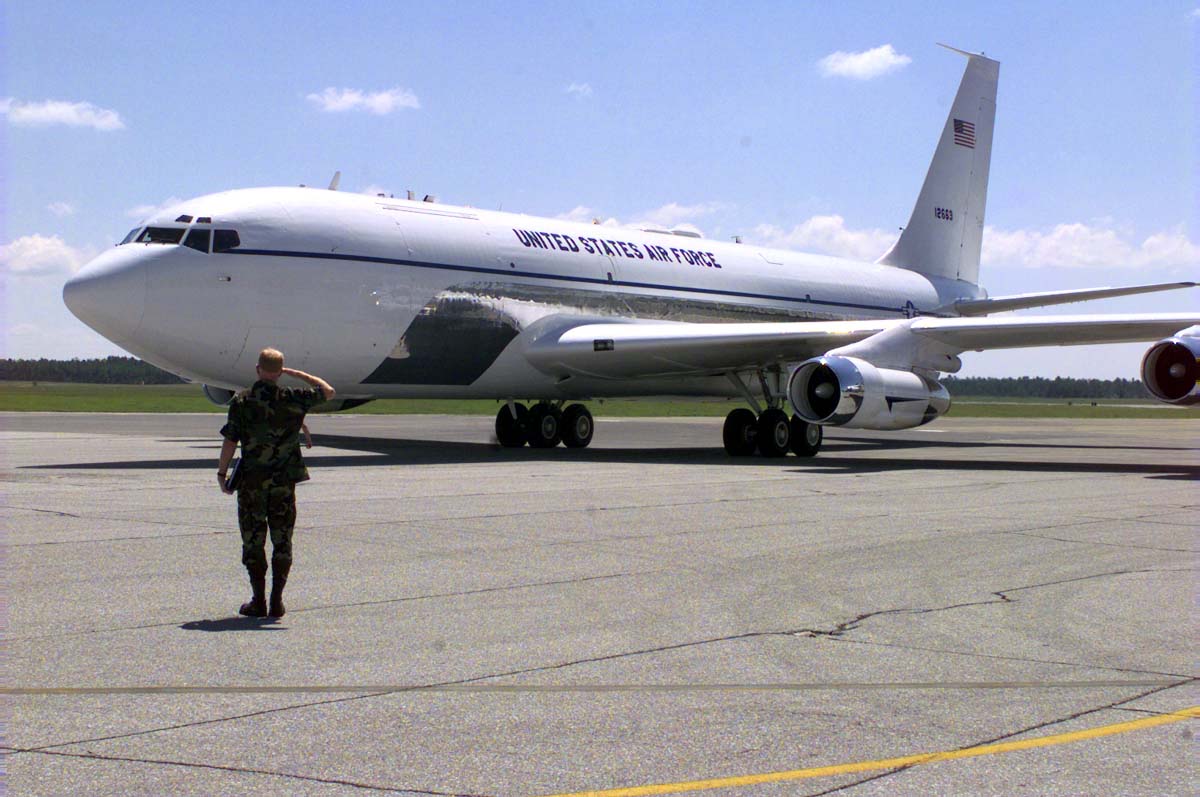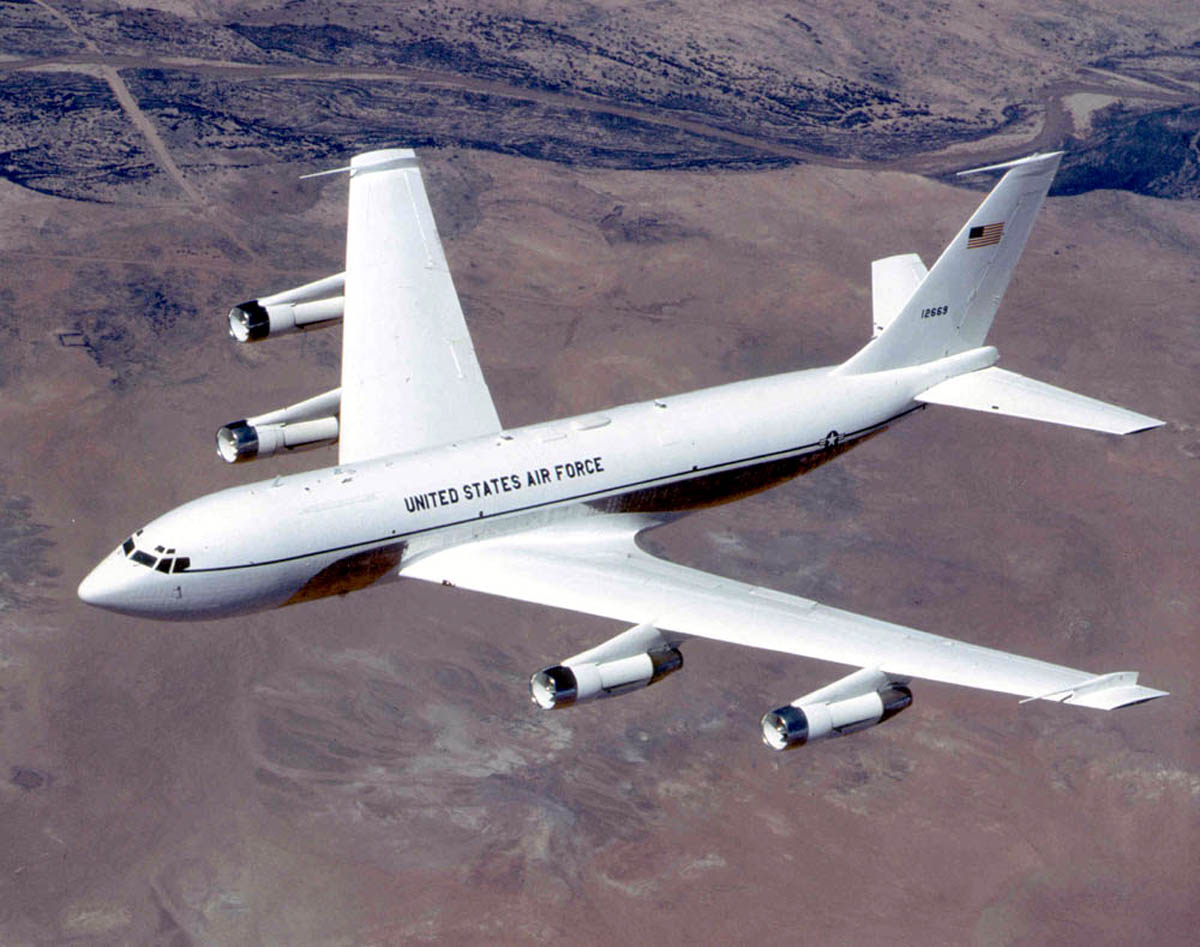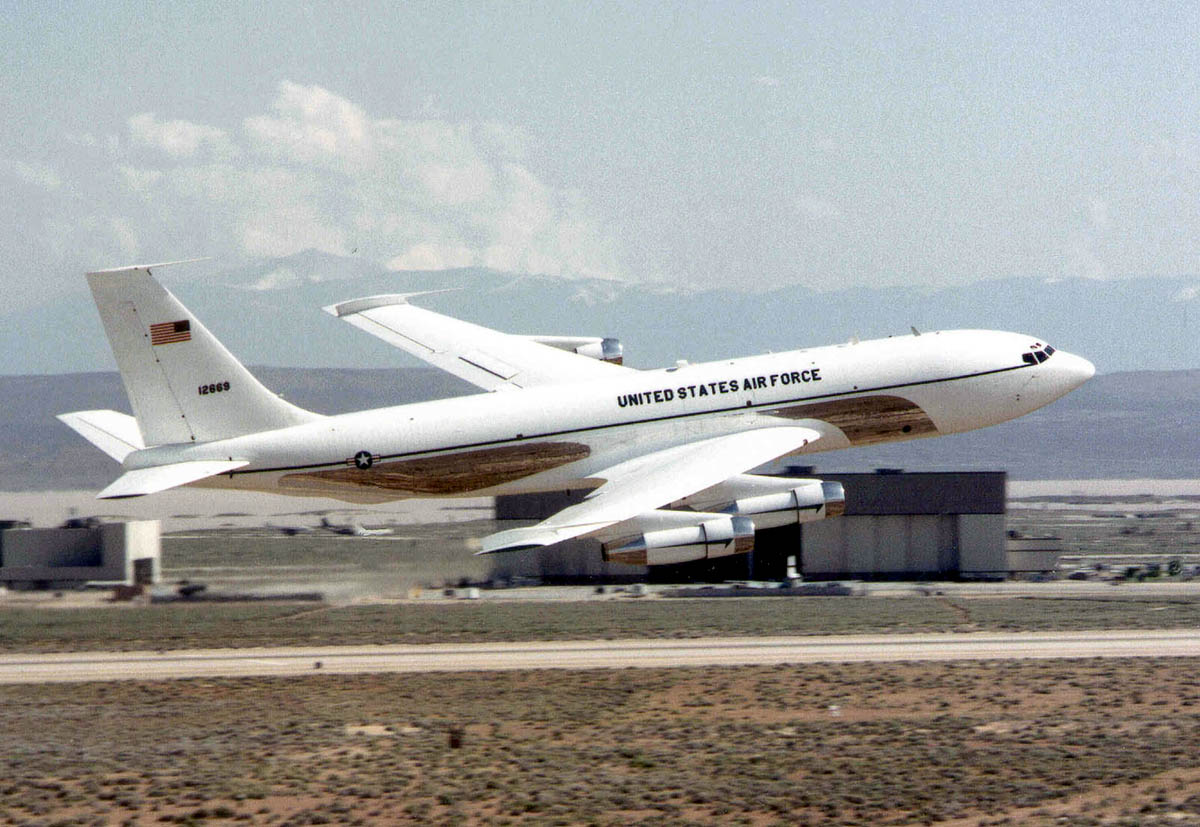


These aircraft are some of the most valuable resources available to the US government, both for maintaining the peace and, failing that, prevailing in case of war. But the technological sophistication of their sensors and other systems means nothing if they cannot convey their information to other forces quickly and reliably.
MITRE staff and Air Force technicians installed the prototype on the Air Force C-135C aircraft used by the Air Force chief of staff; nicknamed Speckled Trout, this aircraft has a secondary role of serving as a testbed for proposed command and control systems.
To communicate, these aircraft rely on a complex collection of different systems, including radios, data links, cryptographic sets, and other equipment. Today, each of these components is hard-wired directly to a central point, often a patch panel (the direct equivalent of an old-fashioned telephone switchboard), where connections can be made. "It's something of an incongruous situation, to say the least," observes MITRE department head Tom Hawes. "Here are the most advanced aircraft in the world relying on an internal communications architecture that, in principle, hasn't changed in fifty years. What's more, each aircraft is configured differently."
The current arrangement, where each item of communications and cryptological equipment is hard-wired together to a patch panel, often proves cumbersome, limiting, and maintenance-intensive. Operating the system (for example, communicating to another aircraft) requires a manual operation--pulling out connectors and plugging them back in at the patch panel. Should a component fail in flight, working around the failure is cumbersome--if not impossible--and can result in the aircraft being unable to employ its full communications capability. Adding a new piece of equipment, even one as relatively simple as a laptop computer, requires a major effort; upgrading systems is even more difficult and costly. In addition, the long stretches of copper cable required to hard-wire every individual component impose a significant weight penalty on the aircraft.
But perhaps the greatest impact is in the area of maintenance and logistics. Since each type of aircraft was developed by a different contractor, each has its own unique, proprietary architecture and components. The logistics system must accordingly stock components unique to each aircraft instead of common components, which represents a huge expense over the life of the system. In addition, maintenance technicians require training unique to each aircraft, another costly consideration.
"There is also another, hidden, cost associated with the use of a unique architecture," notes Slaybaugh. "Since a single contractor developed the system, the government is forced to rely on that single supplier for all the components and equipment. This approach is not always in the government's interest, since the government cannot use competition to keep costs down."
Recognizing this unique status, the Defense Information Systems Agency (DISA), in partnership with the Air Force, formally asked MITRE in April 1995 to develop a technical design for a common airborne architecture. "We made maximum use of the Open Systems Standards approach and commercial off-the-shelf, or COTS, systems," notes program manager Art Snyder. "These two philosophies guaranteed maximum flexibility for the system, and were directly in line with Air Force guidance."
Open Systems Standards mandates that systems use industry-standard communications protocols for maximum flexibility, compatibility, and ease of upgrading. These standards include Asynchronous Transfer Mode (ATM), which allows for the simultaneous transfer of voice, data, and video imagery over the same communications paths. Another standard is VMEbus, which allows for the interoperability of different computer components, including processors and input-output boards.
The use of COTS equipment gives the architecture additional flexibility and lowers its cost--by using computers, communications switches, and other components already being produced and sold commercially, the government can realize significant savings in both development expenses and procurement costs.
The prototype effort also required MITRE to develop software that ranged from assembly language code, to programming an ASIC logic circuit, to real-time data transfer coding. In addition, MITRE staff developed a Graphical User Interface (GUI) for the Windows-based personal computer that controlled the system. In total, MITRE wrote 50,000 lines of code, yet this one-time demonstration integrated over 1,000,000 lines of code, taking full advantage of COTS and previous developments.
Other challenges included resolving design errors in COTS products, and working with the COTS vendors to correct the errors in design. "MITRE's reputation in the electronics industry made this relatively easy," notes Snyder. "Since we're recognized as having some of the most experienced and knowledgable experts around, it's a bit easier for us to convince people."
After completing and testing the prototype, MITRE staff and Air Force technicians installed it on the Air Force C-135C aircraft used by the Air Force chief of staff (this aircraft, nicknamed Speckled Trout, has a secondary role of serving as a testbed for proposed command and control systems). The architecture prototype establishes a local area network within the aircraft; each communications device, computer, and other component is attached directly to the network and addressed electronically.
The bus approach used by the new architecture also results in weight savings, enabling the Air Force to add additional equipment (to perform expanded missions), improve the aerodynamic performance of the aircraft, or opt for a combination of both.
Further advantages of the new architecture stem from its use of commercial equipment; for example, it is less expensive (commercial equipment is virtually always far less expensive than its military counterpart). In addition, there are at least several suppliers for every component, making it easier for the government to establish alternate sources of supply and ensure that it is paying a reasonable price.
Another significant gain from the new architecture is in maintenance and logistics. Since system components are common to all the aircraft, the logistics system has fewer different components to purchase, stock, and transport. This commonality also simplifies maintenance training, and makes maintenance technicians more versatile (since they can now work on several different aircraft instead of just one).
The new architecture is one component of the armed services' application of advanced information technology to the acquisition, communication, and employment of information. U.S. armed forces are already using this approach to fight faster, smarter, and more efficiently, and the future promises even more significant advances--advances that the new architecture will help make accessible to U.S. forces around the world.


